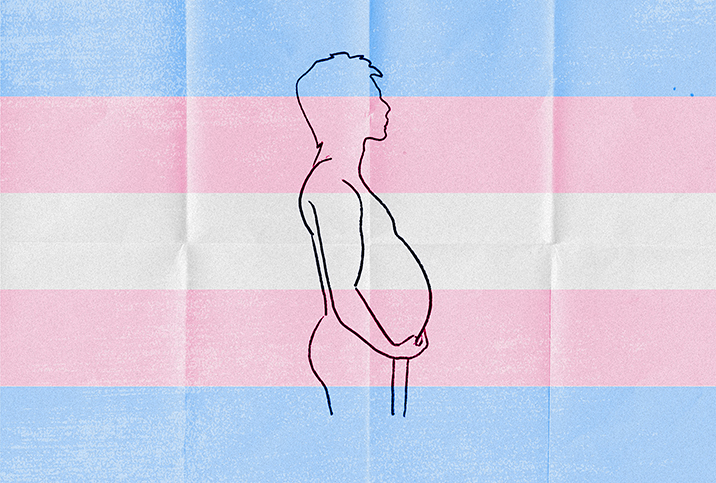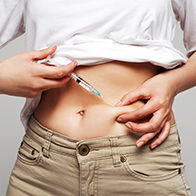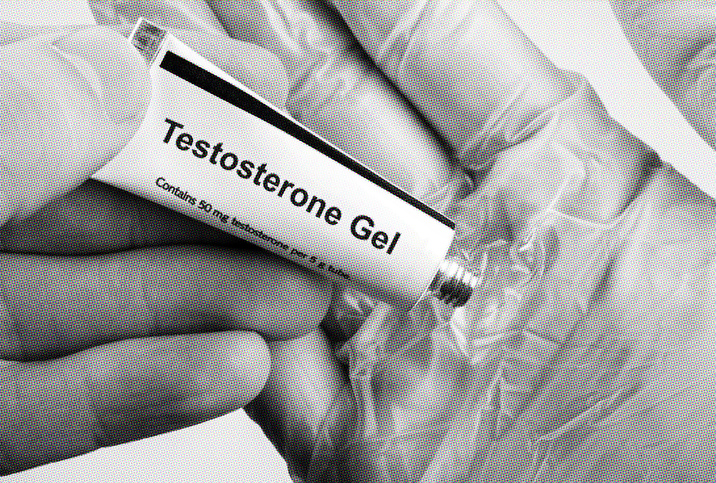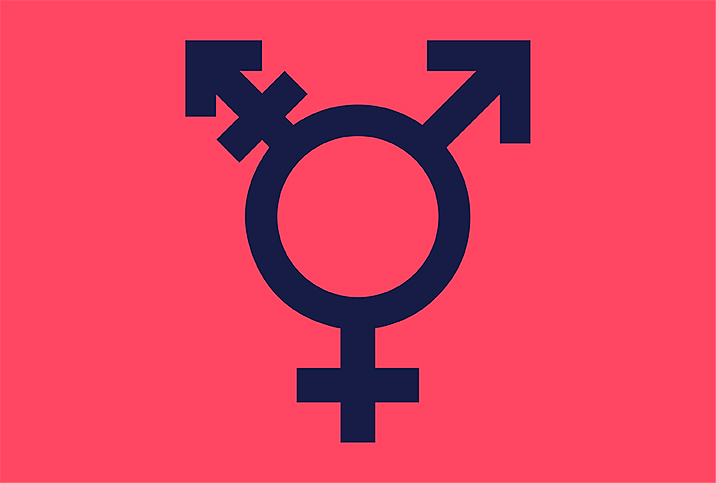I Reclaimed My Postpartum Body by Medically Transitioning

The first time I felt present in my body was like plunging into an ice-cold river: breathtaking and terrifying. This feeling didn't happen until I was 23 years old, during prenatal yoga teacher training. I'd done yoga with a group of retired women on Thursdays when I was in high school and always thought it paired well with rock climbing. But now, a few weeks into the course, I didn't really know why I was there.
The instructor had us lie in a bridge pose with a foam block under our lower back. We were told to place our hands on top of our pelvis and release the tension, kind of like a reverse Kegel. I tried to follow suit but wasn't sure what it meant to let go of tension in an area I couldn't reach mentally.
I searched for sensation, squeezing like my body was a stress ball until I felt a twinge of connection.
Feeling my body for the first time
The realization that it was possible to exist in my body and not just my head led me down a path of internal sifting and untangling. I began to notice the weight of what I would soon understand as gender dysphoria sitting atop my chest. I realized all my past relationships were an effort to be perceived as masculine. Gender dysphoria is defined as clinically significant distress or impairment related to a strong desire to be of another gender, which may include a desire to change primary and/or secondary sex characteristics.
One night, while scrolling through YouTube for something to help me dissociate from my dysphoria, I came across a video of a nonbinary person talking about their decision to take testosterone. Something began to click. I had been searching for the words and finally found them.
I scheduled a doctor's appointment to talk about trying hormone replacement therapy (HRT). I knew I wanted to appear more masculine, I knew I had been making "jokes" about wanting a mustache since I was a teenager, and now that could become a reality. At the appointment, my doctor suggested I start taking a form of birth control in addition to testosterone. This was when I realized that despite everything I was learning about myself, I still wanted to try to have a baby. HRT would have to wait.
The following year was another filled with dissociation, a cloudy existence I could now somewhat link to dysphoria. In March 2020, I started a new job working at a nonprofit group for rural LGBTQ+ youth. My small group of co-workers was all trans and nonbinary, and I wasn't misgendered every day. The thought of starting testosterone came flooding back. I thought nonstop about making the follow-up appointment with my doctor, getting an intrauterine device (IUD) and waiting till later to have a baby.
Days into my new job, the COVID-19 pandemic reached the United States. In the ensuing lockdown, I took a pregnancy test. It was positive.
I've never been great at the nongender kinds of transitions, and this was no exception. Everything shifted again, and whatever feelings I had grasped to tether me to this body had detached.
Purpose in pregnancy
Pregnancy was hard. My first trimester was filled with nausea, sleep and not much else. The middle was mostly a blur. The last trimester lasted weeks too long, and on the day I was supposed to be induced, I naturally went into labor.
Some people say giving birth is the most empowering experience they've ever had. Some say it's the worst. I remember watching myself in the hospital bed, holding my shins, as my partner hydrated me, wiped my forehead and held my hand. I was a bystander to a body I felt I was renting.
When my 8-pound baby wriggled onto my chest, they immediately found my nipple and latched on. For the first few months, I felt like there was finally a job for my body to do—a reason to have this anatomy. The act itself didn't feel feminine or inherently motherly; it felt like power.
At about the six-month mark, my baby began eating solid foods, crawling around, laughing and babbling. The summer began, and with the 2021 heatwave in Oregon that launched up to 115 degrees Fahrenheit, I could no longer hide under layers and baggy hoodies.
The signs I needed testosterone were getting impossible to ignore (and I had become adept at ignoring them). It was time to talk to my doctor about the next steps. Again, she recommended I get an IUD inserted to have a backup method of birth control once I fully weaned my baby off my milk and was ready to begin HRT. So I made the decision to get an IUD.
I'd had an IUD a few years prior to getting pregnant, and while I loved the ease of having one and the fact that my periods went away completely, I didn't love the way it made me feel mentally. This time, I was confident that in combination with testosterone, it would be OK.
What I didn't know is that when you get an IUD placed after giving birth, there is a higher risk of it embedding into your uterine wall. Mine didn't just embed, it ended up puncturing my abdomen. The only way to remove it was microsurgery inside my mending, tender belly.
After surgery, knowing I was pumped full of anesthesia and pain medication, I didn't want to chestfeed, so I stopped. We'd been preparing for this, and my baby was surprisingly…perfectly fine. It was barely an adjustment. For months, I'd worked up a story of guilt and shame for wanting to wean them off, when in reality, they would have been completely happy just drinking formula.
This is when the reclamation finally began, or at least, resumed. I told my doctor I was ready for testosterone, I could figure out birth control later and use barrier contraceptives responsibly. She was eager to get me started, as well, knowing how long I'd waited to start the process of transition.
Choosing to be me
On Dec. 20, my 27th birthday, I received my first injection. I'd heard other trans people describe dysphoria as a cloud, and I didn't relate to that until almost immediately after the treatment was administered, when I felt the cloud of dysphoria evaporate. I could feel myself step into my body, reconnect and connect for the first time in ways I didn't know were possible. Ever since, I've carried myself with more confidence and ease—and been less lost in my head. All of the detachment I felt during intimacy vanished: I'm excited to be touched and explored.
Who I am now versus who I was in that yoga class feels like a different person. I can exist in this body with a sense of ownership now. I can't wait for my child to grow up with a model of what it looks like to love yourself endlessly, to listen to what your body is telling and asking you, and to be confident in aligning how you feel and how you present yourself. I know new challenges are going to and have already shown up, and it's scary to step out of the shadows of dysphoria when they grant you a false narrative of safety.
Choosing to be myself is an act of risk-taking. Every day, I assess if it's worth it, and the answer keeps coming back to this little human watching my every move. They just started fake-laughing to sound like me—proof they are attracted to my joy. I don't ever want them to be afraid. I hope they never have to delay their truth.




















